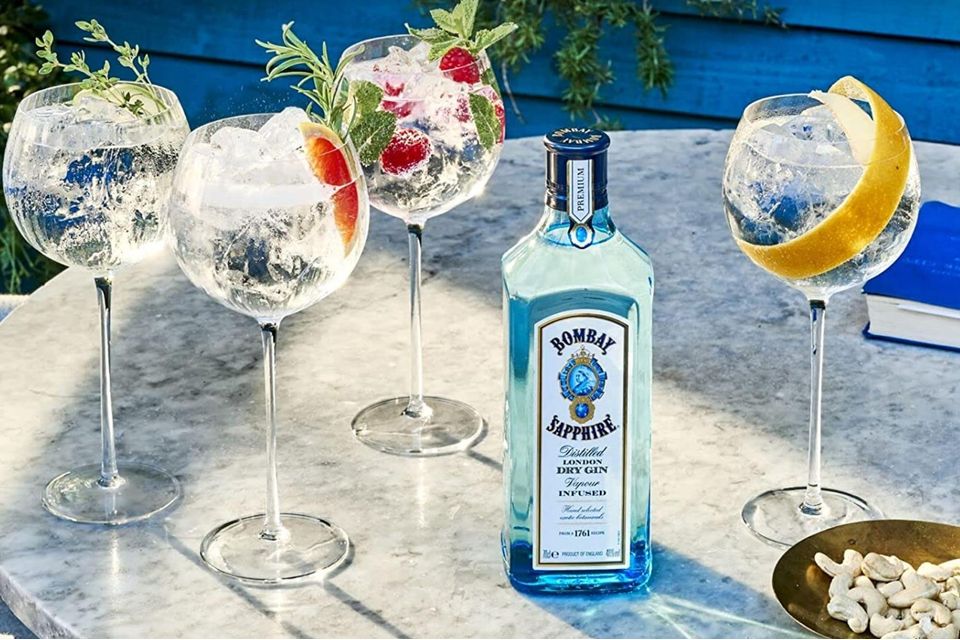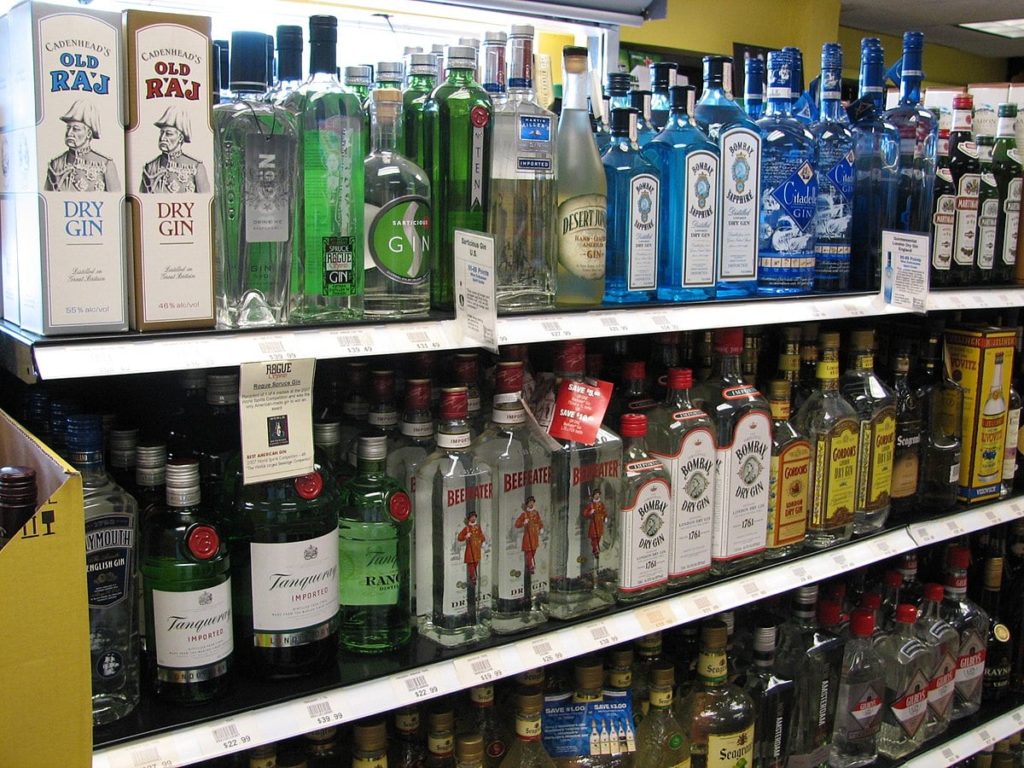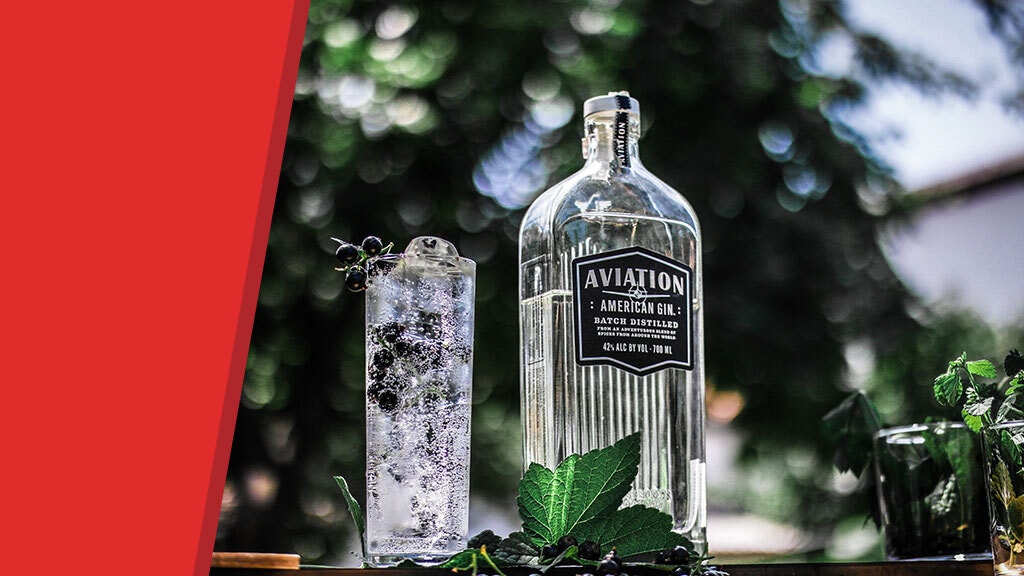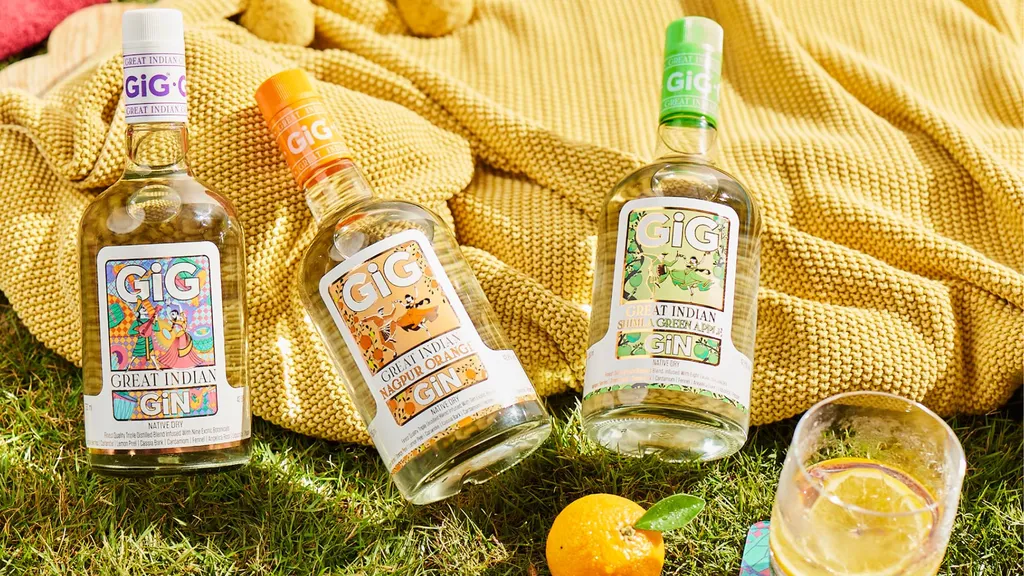With origins related again to its medicinal use using European monks and alchemists, gin has developed right into a liked and versatile spirit cherished internationally. Originally crafted for its healing homes, gin’s adventure through records has seen it remodel into a staple inside the global mixology and past. From its Dutch and Belgian roots to turning into England’s countrywide drink at some stage in the Gin Craze, gin’s attraction lies in its botanical-infused flavors and flexibility in diverse cocktails and culinary creations. Notably low in calories in gin and free of carbs, sugar, protein, and fats, gin offers a more fit opportunity to other alcoholic beverages. This introduction sets the stage for an exploration of gin’s wealthy history, its nutritional content, and its capability and health advantages. As we delve deeper into the arena of gin, we find its undying attraction and its enduring legacy as a critical spirit for enthusiasts and connoisseurs alike.
What is Gin And How Many Calories in Gin?
Gin is a distilled alcoholic beverage that is on the whole flavored with juniper berries. It is known for its botanical and herbal notes, which are derived from a mixture of numerous botanicals together with juniper, coriander, citrus peels, and other spices. The defining function of gin is its foremost juniper taste, which sets it apart from other spirits.
The production procedure of gin usually includes distilling a neutral spirit, which includes grain alcohol, with juniper berries and different botanicals. These botanicals are regularly delivered to the spirit in a pot nevertheless or through vapor infusion, in which the alcohol vapors pass through a basket containing the botanicals, selecting their flavors and aromas. There are numerous forms of gin, each with its personal particular flavor profile and production technique. The most common styles consist of:


- London Dry Gin: This style of gin is understood for its dry and crisp flavor profile, with juniper as the dominant botanical. London Dry Gin does not allow for the addition of artificial flavors or sweeteners after distillation, resulting in a pure and juniper-forward taste.
- Plymouth Gin: Originating from the English town of Plymouth, this style of gin is barely sweeter and much less juniper-ahead than London Dry Gin. It often features earthy and citrus notes, with a clean and complete-bodied mouthfeel.
- Old Tom Gin: This style of gin is sweeter and extra complete-bodied than London Dry Gin, with a barely higher sugar content material. It became famous in the 18th and 19th centuries and is experiencing a revival within the craft cocktail scene.
- Contemporary or New Western Gin: These gins are characterized by their revolutionary taste profiles, which may additionally consist of non-traditional botanicals which include cucumber, rose petals, or maybe tea. They offer a modern twist on conventional gin and attraction to a range of palates.
Gin is a flexible spirit that can be enjoyed in a variety of ways. It is typically used because of the base spirit in classic cocktails, including the gin and tonic, martini, and negroni. Additionally, gin’s botanical flavors make it a popular choice for blending in cocktails or playing neat or on the rocks.
Nutritional Information of Gin:
Gin is often preferred not most effective for its distinctive taste but additionally for its notably low-calorie content material and minimal dietary effect. Here’s a breakdown of the dietary data of gin:
Calories in Gin:
- One fluid ounce (approximately 30 milliliters) of gin includes approximately 64 calories.
- Compared to other alcoholic liquids, it is considered low calories in gin, making it a famous desire for the ones watching their calorie intake.
Carbohydrates:
- Gin is carb-free, containing negligible quantities of carbohydrates.
- This makes it a suitable choice for individuals following low-carb or ketogenic diets.
Sugar:
- Gin is free of sugar, making it a great desire for those seeking to restrict their sugar intake.
- Unlike many flavored alcoholic drinks, gin does not include introduced sugars or sweeteners.
Protein:
- Gin does not now comprise any giant quantities of protein.
- While it offers calories, these calories in gin come mainly from alcohol rather than protein.
Fat:
- Like protein, gin does not contain any substantial quantities of fat.
- It is a sincerely fat-free alcoholic beverage.
Other Nutrients:
- Gin does not comprise vitamins or minerals in good-sized portions.
- However, a number of the botanicals used in gin production, which include juniper berries, may also contribute small quantities of certain vitamins and antioxidants.
Health Considerations:
- While relatively low in calories in gin and free from carbs, sugar, and fat, it is essential to eat it carefully.
- Excessive alcohol consumption will have poor outcomes on fitness, consisting of liver damage, the improved danger of sure cancers, and impaired cognitive characteristics.
- If you select to devour gin or some other alcoholic beverage, it’s critical to accomplish that responsibly and carefully.
Exploring the Health Benefits of Gin:
Exploring the capacity fitness benefits of gin can be fascinating, as it’s more than only a flavorful spirit – it also carries botanical ingredients that could provide positive benefits while eaten up carefully. Here’s a better study of a number of the fitness benefits related to gin:
- Antioxidant Properties: Gin is on the whole flavored with juniper berries, which can be rich in antioxidants. These compounds assist defend cells from damage caused by unfastened radicals, probably decreasing the danger of persistent sicknesses together with heart disease, most cancers, and neurodegenerative issues. The juniper berries, at the side of different botanicals utilized in gin manufacturing, contribute to its antioxidant profile, making it a beverage that offers more than simply refreshment.
- Heart Health: Moderate gin intake has been related to potential advantages for coronary heart health. Some studies advocate that the botanicals observed in gin, specifically juniper berries, might also have cardioprotective consequences, together with lowering blood strain and enhancing blood movement. Additionally, the moderate consumption of alcohol, which includes gin, has been associated with a reduced chance of coronary heart disorder while fed as part of a balanced lifestyle.
- Blood Circulation: Certain botanicals used in gin production, including juniper berries and citrus peels, have residences that can assist enhance the bloodstream. This may have wonderful consequences on common cardiovascular fitness, as good enough blood flow is important for turning in oxygen and nutrients to tissues all through the body. While extra research is needed to fully apprehend the mechanisms behind these outcomes, preliminary studies suggest that mild gin consumption may additionally contribute to improved blood movement.
- Digestive Aid: Traditionally, gin has been used as a digestive resource because of its herbal and botanical ingredients. Some of the botanicals discovered in gin, together with coriander and angelica root, were related to digestive advantages, consisting of relieving bloating, indigestion, and stomach discomfort. Additionally, the sour houses of gin might also stimulate digestive enzymes and sell healthful digestion while consumed in moderation.
- Stress Relief: While immoderate alcohol consumption will have terrible consequences on intellectual fitness, mild gin intake may assist in alleviating pressure and promote rest. The botanicals discovered in gin, in particular those with calming homes which include chamomile and lavender, may contribute to its soothing effects. Enjoying a gin-primarily based cocktail carefully may be a way to unwind and de-strain after a protracted day, provided it is carried out responsibly and mindfully.
Top 10 Ranked by Calories in Gin:
- Bombay Sapphire – Approximately 64 calories in step with serving. Known for its balanced flavor profile and colorful botanicals, Bombay Sapphire is a traditional London Dry Gin that offers a crisp and fresh flavor.
- Tanqueray London Dry Gin – Approximately 64 calories consistent with serving. Tanqueray is renowned for its ambitious juniper taste and citrus undertones, making it a staple factor in lots of conventional cocktails which include the gin tonic and martini.
- Hendrick’s Gin – Approximately 64 calories according to serving. Hendrick’s Gin is outstanding via its infusion of cucumber and rose petals, resulting in a clean and subtly floral taste that sets it aside from traditional gins.


- Beefeater London Dry Gin – Approximately 64 calories in keeping with serving. Beefeater is a crucial London Dry Gin is known for its strong juniper flavor and flexibility in cocktails, making it a face amongst bartenders and gin lovers alike.
- Gordon’s London Dry Gin – Approximately 64 calories according to serving. Gordon’s is one of the oldest and most well-known gin brands providing a classic London Dry Gin with a crisp and dry profile that pairs nicely with a whole lot of mixers.
- Plymouth Gin – Approximately 64 calories in keeping with serving. Plymouth Gin is a historical gin brand with a smooth and barely sweeter taste in comparison to traditional London Dry Gins, making it a favorite for sipping neat or cocktails.
- Brooklyn Gin – Approximately 64 calories in keeping with serving. Brooklyn Gin is a small-batch craft gin made in New York City, acknowledged for its complicated flavor profile and use of locally sourced botanicals, consisting of hand-cracked juniper berries.
- The Botanist Islay Dry Gin – Approximately 64 calories consistent with serving. The Botanist is crafted on the Scottish island of Islay and functions as a unique combo of twenty-two botanicals, together with wild Islay botanicals together with heather, bathroom myrtle, and meadowsweet.
- Aviation American Gin – Approximately 64 calories consistent with serving. Aviation Gin is an American craft gin regarded for its easy and approachable taste, with notes of juniper, citrus, and floral botanicals.
- No. 209 Gin – Approximately 64 calories consistent with serving. No. 209 Gin is a small-batch gin produced in San Francisco, providing a modern and nuanced flavor profile with guidelines of citrus, spice, and floral notes.
How to Enjoy Gin Brands Responsibly:
Enjoying gin responsibly is critical for retaining your fitness and nicely-being at the same time as nevertheless savoring the flavors and stories it offers. Here are a few hints for taking part in gin responsibly:
Moderate Your Consumption:
- Stick to endorsed guidelines for gin alcohol consumption, which typically advise a couple of 2 general liquids consistent with day for adults.
- Pace yourself when ingesting gin, sipping slowly, and taking breaks among drinks to gauge your level of intoxication.
Stay Hydrated:
- Alternate between alcoholic beverages and non-alcoholic drinks, together with water or club soda, to stay hydrated and decrease the danger of dehydration.
Choose Quality Over Quantity:
- Opt for a higher-satisfactory gin brand that prioritizes craftsmanship and uses top-rate botanicals. Quality gin frequently has a smoother flavor and can be extra exciting to drink in moderation.
Be Mindful of Mixers:
- Choose mixers that complement the flavors of gin without adding excessive sugar or calories to gin. Tonic water, soda water, and fresh citrus juices are brilliant choices for mild and clean gin cocktails.
- Avoid sugary or high-calorie mixers, as they can notably grow the general calorie content material of your drink and contribute to immoderate calorie consumption.
Know Your Limits:
- Be privy to your tolerance stage and understand how to stop ingesting. Listen for your body’s indicators and keep away from peer pressure to drink greater than you’re snug with.
- If you find yourself feeling intoxicated, designate a sober motive force or arrange for opportunity transportation to ensure you get home correctly.
Gin and Tonic – A Classic Combination:
History of Gin and Tonic:
- The origins of the gin and tonic may be traced again to the British colonial technology in India at some stage in the 19th century. British soldiers stationed in India have been given quinine, a sour compound derived from the bark of the cinchona tree, to save you from malaria.
- To make the quinine greater palatable, they mixed it with water, sugar, lime, and gin, consequently developing the precursor to the modern-day gin and tonic cocktail.
Classic Recipe:
The traditional gin and tonic recipe is simple yet fantastically clean. It generally consists of:
- 1 ½ to 2 ounces of gin
- 3 to 4 oz. Of tonic water
- Fresh lime wedge or wheel, for garnish
- Ice cubes
To put it together, fill a highball glass with ice cubes, upload the gin, and pinnacle it off with tonic water. Stir gently to combine, then garnish with a clean lime wedge or wheel for a burst of citrus flavor.
Key Ingredients:
- Gin: The base spirit of the cocktail, gin offers the botanical flavors and aromatic profile that outline the drink. Whether you opt for a classic London Dry Gin or a more contemporary craft version, the selection of gin can significantly impact the general taste of the cocktail.
- Tonic Water: The other critical component of the cocktail, tonic water adds effervescence and a slightly sour taste that balances the beauty of the gin. Look for incredible tonic water with herbal ingredients for a first-class taste.
- Lime: A squeeze of fresh lime juice or a wedge of lime serves as a shiny and citrusy garnish that compliments the flavor of the cocktail. The acidity of the lime cuts through the bitterness of the tonic water, resulting in a nicely balanced drink.
Variations:
- While the classic gin and tonic recipe is undying, there are endless versions and twists on the unique cocktail. Experiment with exceptional kinds of gin, including flavored gins or barrel-aged gins, to create unique flavor profiles.
- You can also personalize your gin and tonic using clean herbs, results, or botanicals, consisting of cucumber, mint, rosemary, or juniper berries, for increased intensity and complexity.
Pairing Suggestions:
- Gin and tonic is a versatile cocktail that pairs nicely with a huge variety of meals. Its crisp and fresh taste makes it a top-notch accompaniment to light and clean dishes, along with seafood, salads, and grilled greens.
- The botanical notes of the gin additionally supplement the flavors of Mediterranean delicacies, which include dishes like tapas, olives, and cured meats.
Other Uses of Gin:
Beyond being a celeb element within the classic gin and tonic, gin boasts a versatility that extends a long way beyond the cocktail glass. Here are a few creative and flavorful methods to contain gin in various culinary and mixology creations:
Gin Cocktails:


- While the gin and tonic may also reign ultimate, endless different gin-primarily based cocktails are waiting to be explored. From the iconic martini to the fresh Tom Collins and the fragrant negroni, gin serves as the muse for an extensive variety of traditional and cutting-edge cocktails.
- Experiment with one-of-a-kind cocktail recipes and variations, incorporating clean results, herbs, and botanicals to create specific and flavorful beverages.
Culinary Applications:
- Gin’s botanical flavors and fragrant profile make it an exceptional factor in cooking and baking. Use gin to infuse flavor into marinades, sauces, and dressings for meats, seafood, and salads.
- Incorporate gin into cakes and baked items, which includes gin-infused desserts, cookies, and sorbets, for a boozy twist on conventional recipes.
Gin-Infused Foods:
- Create your gin-infused meals by using marinating substances which include cheese, olives, or fruit in gin. The botanicals and juniper flavor of the gin will impart a unique and complicated flavor to these dishes.
- Experiment with gin-infused sauces and condiments, which include gin mustard or gin-infused fish fry sauce, to feature depth and complexity in your favorite dishes.
Gin-Based Liqueurs:
- Explore the arena of gin-primarily based liqueurs, which offer a sweet and flavorful opportunity to traditional gin. Sloe gin, for instance, is made by infusing gin with sloe berries and sugar, resulting in a rich and fruity liqueur that can be enjoyed on its own personally or in cocktails.
- Other gin-primarily based liqueurs, which include elderflower gin liqueur or raspberry gin liqueur, provide various flavors and possibilities for mixing and sipping.
Gin-Inspired Infusions:
- Get creative with homemade gin infusions with the aid of combining gin with fresh results, herbs, spices, and botanicals. Infuse gin with substances like cucumber and mint for a clean twist, or test with greater unique flavors like cardamom and superstar anise for a unique and aromatic infusion.
- Use gin infusions to create signature cocktails or flavored syrups to add flavor to liquids and culinary creations.
Additional Tips:
- Mind Your Portions: While gin can have lower calories in gin as compared to different alcoholic drinks, it is vital to take note of portion sizes. Stick to standard serving sizes, along with one fluid ounce, to maintain your calorie intake in the test.
- Read Labels: When deciding on gin, take note of the label and any extra ingredients or flavors that could affect its calorie content. Flavored gins for gin liqueurs may also contain added sugars or higher calorie counts, so opt for alternatives with natural botanical flavors whenever possible.
- Experiment with Mixers: Explore one-of-a-kind mixer alternatives to create low-calorie gin cocktails. Swap sugary sodas for calorie-unfastened alternatives like soda water or flavored sparkling water, and contain fresh herbs and citrus to bring flavor without more calories.
Conclusion:
In conclusion, calories in gin transcend its position as a conventional spirit to become a flexible ingredient that elevates cocktails, culinary creations, or even desserts. From the iconic gin and tonic to a big range of innovative cocktails, gin gives a botanical-driven flavor profile that excites the palate and enhances the drinking experience. Beyond the bar, gin’s fragrant characteristics lend themselves well to marinades, sauces, and infused ingredients, even as gin-based liqueurs and homemade infusions upload depth and complexity to several dishes. Whether loved in a clean cocktail on a warm summertime day or infused right into a decadent dessert, calories in gin continue to captivate fans with its botanical attraction and limitless possibilities. Cheers to the long-lasting charm of gin, a spirit that blends culture with innovation to satisfaction and encouragement.
FAQs:
Q1: How Many Calories Are in a Standard Serving of Gin?


Ans: One general serving of gin, commonly one fluid ounce, includes about 64 calories. However, the calorie content material can also range slightly depending on the specific emblem and any additional ingredients or flavors.
Q2: Is Low in Calories in Gin Compared to Other Alcoholic Beverages?
Ans: Yes, gin is typically taken into consideration to have lower calories in gin compared to many other alcoholic beverages. For example, a fashionable serving of wine includes around 120-130 calories, whilst a beer can vary from 100 to over 200 calories in line with a serving.
Q3: Does Gin Contain Carbohydrates, Sugar, Protein, or Fat?
Ans: Gin is free from carbohydrates, sugar, protein, and fats, making it an appealing choice for those trying to limit their consumption of those nutrients. It is more often than not composed of alcohol and botanical flavors derived from components along with juniper berries and other herbs.
READ MORE: Top 10 Brands of Tequila in the World
